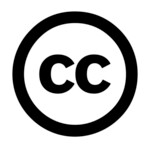5 What are Creative Commons Licenses?
What are Creative Commons?

How do you know what permissions you have when selecting a resource? Can you revise it? Can you make copies of it to share with others? The type of license a resource holds answers these questions. Creative Commons licenses give creators a way to enable others to use their works openly while reserving certain conditions.
Creative Commons is a nonprofit organization that provides open licenses and information on how to use them. To learn more about it, go to the Creative Commons site. As of the end of 2017, more than a billion. CC-licensed works on the internet, including works on many common platforms like YouTube, Flickr, Ted Talks, and Wikipedia.
However, you don’t need to use a Creative Commons license to give someone permission to read your article or watch your video because reading and watching aren’t activities that copyright generally regulates.
Here are two more important scenarios in which a user does not need a copyright license and does not need to follow the terms of the CC license:
- When you are using a work under fair use, fair dealing, or some other applicable limitation and exception to copyright.
- When the work is in the public domain, CC licenses should not be applied to works in the worldwide public domain.
What are Creative Commons Licenses?
The video below is an introduction to Creative Commons Licenses. It explains what other people can do with resources you created under a variety of licenses. Each license indicates whether others can use, share, and/or build on your work.
How are CC Licenses Different from Traditional Licenses?
If you hide the copyright notice, it may be hard to tell the difference between some OER and traditional, proprietary resources. The educational content, whether it’s a textbook or support materials like online homework, test banks, and supplemental videos, is created and reviewed by experts, and it aims to cover a similar scope and sequence of topics.
What sets open resources apart is the “open” license, which enables two key features:
- OER can be legally shared, copied, and distributed so that anyone can access the material in a wide range of print and digital formats at little or no cost, without fear of expiration dates.
- The open materials can be legally adopted by instructors, making it possible to add new material, change terminology, or remove unnecessary components. Hence, the resource perfectly fits an educator’s needs.
Works with an Open License
Open licenses do not replace copyright; they work with copyright law to change the default setting from “All Rights Reserved” to “Some Rights Reserved.” Under U.S. law, copyright is the exclusive right to dictate how users copy, distribute, and adapt a work. By default, all of those rights are reserved by the author, and anyone who wants to use it needs to get permission from the author in the form of a license. The author may choose to use one of the many Creative Commons Licenses to specifically state what type of use is permitted for their work. Educators wanting to distribute, reproduce, or adapt works with an open license would not need to seek permission as long as the intended use falls under the stipulations of the open license. Examples of several different types of scholarly works and how they are licensed can be viewed within the Open Educational Resources (OER) Toolkit.
Creative Commons Licenses work with copyright to provide up-front permissions to users from a “some rights reserved” approach. They are free to apply, allowing the public to use certain works under specified conditions and creators to retain their rights and get credit for their work. The licenses are standardized and understandable by non-lawyers. There are seven total:

References
Creative Commons. (n.d.) About the licenses. https://creativecommons.org/
Kennesaw State University Libraries. (n.d.). OER & copyright. https://libguides.kennesaw.edu/oer/oercopyright Licensed under CC BY 4.0.
Lannoy, G. (2008) Creative Commons Logo [Image]. Flickr. CC BY 2.0.
National Copyright Unit. (n.d.). Open educational resources (OER). Smartcopying. https://www.smartcopying.edu.au Licensed under CC BY 4.0.
Paradiso, J. R., & Luken, D. (n.d.). Introduction to open education (Adapted from Parsons, J., OER specialist training manual). Licensed under CC BY SA 4.0.
SPARC. (2018). SPARC Open Education Leadership Program. https://sparcopen.org/leadership-program Licensed under CC BY 4.0.
Taintor, A. (2020). RC Open Education 101: Creative Commons License (Adaptation of Creative Commons Certificate). Creative Commons. https://certificates.creativecommons.org/about/certificate-resources-cc-by/ Licensed under a CC BY 4.0.
U of G Library. (2018). What are Creative Commons licenses? [Video]. YouTube. https://www.youtube.com/watch?v=srVPLrmlBJY Licensed under a CC BY-NC-SA 4.0.

